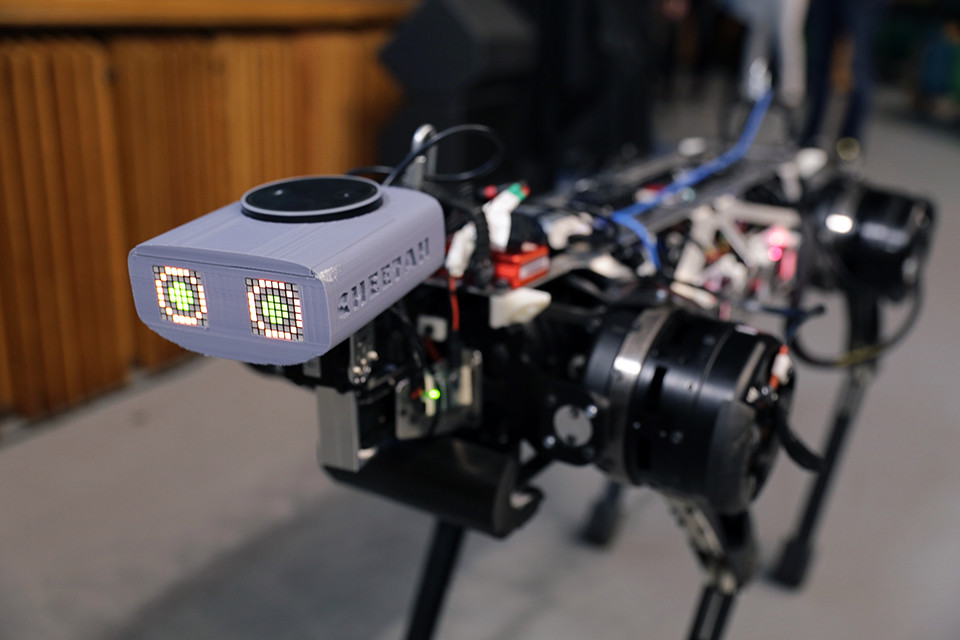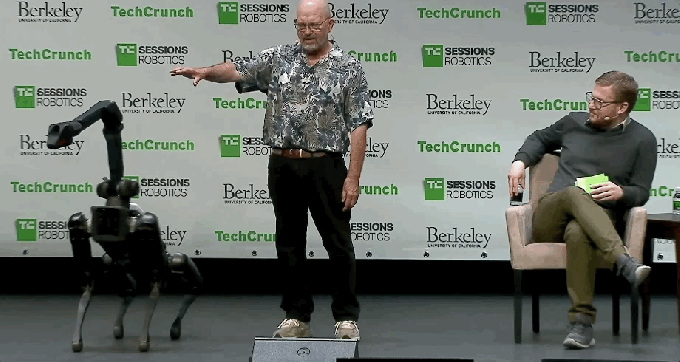As a race, human beings have a lot of shortcomings. We’re not very fast, not all that strong and while we have been able to create technology that helps us overcome our environments, we’re not very good at adapting to them. Animals, on the other hand, have been successfully adapting and evolving to meet the world’s challenges long before we were stumbling around.
While it might be too late for us to learn these lessons ourselves from our animal counterparts, it’s not too late to pass them on to our inventions. And biomimetic and bio-inspired labs across the world are doing just that.
“If you think about mobility technology in the engineering world, we have airplanes in the air, ships in the water, but none of these technologies are available without our artificial modification of the environment,” Dr. Sangbae Kim, associate professor of mechanical engineering at MIT and director of the university’s Biomimetic Robotics Laboratory, told TechCrunch. “Animals have evolved to be the best at mobility, because, for most of them, it’s critical for survival.”
Crafting technology to mimic nature is nothing new, Kim says. From developing aerodynamic technology to small conveniences like Velcro, humans have been taking a cue from the natural world for as long as we’ve been inventing. The field of engineering, says Kim, has this kind of inspiration as an intrinsic feature and it will be crucial to solving problems such as disaster reconnaissance, labor and even elderly care.
“This is technology we must have,” says Kim. “Not just something cool to have.”
With new technological developments, this kind of inspired design has gone far beyond Velcro in recent years.

Cheetah 3
A prodigy of Kim’s lab, the Cheetah 3 is a 90 pound rescue robot designed to traverse terrain that is dangerous or inaccessible to humans (e.g. power plant inspection of natural disaster reconnaissance) with cat-like reflexes and motion. Its predecessors have been able to make autonomous running leaps over obstacles in their path (granted, at a considerably slower speed than its namesake) and Cheetah 3 has the added functionality to complete all these tasks while blind. By not relying on its sensors and cameras, Cheetah 3 is designed to have a better intuitive knowledge of its environment and perform in scenarios that are either too dark or “noisy” (too visually stimulating.)

Sharklet
Natural inspiration is not only found in robotics, but in material engineering as well. In 2002, Dr. Anthony Brennan, a material science and engineering professor at the University of Florida, was participating in Naval research to design strategies to keep vessels from growing algae and barnacles on their sides. While exploring the question, Brennan discovered that sharks — who spend their lives slowly moving through water — had answered it long ago. Examining the patterns in a shark’s scales, Brennan discovered that the unique ribbed, diamond structure of the shark’s scales discouraged microorganisms from settling on the surface.
Taking this discovery beyond naval ships, Brennan founded the company Sharklet in 2007 to design medical instruments built with this topology and create a non-toxic antibiotic alternative to harsh chemical cleaners.

Biomimetic Worm Bot
Out of Case Western Reserve University’s Biologically Inspired Robotics lab, this creepy-crawly bot is helping both roboticists and neuroscientists better understand a type of motion called peristalsis — or movement through contracting and expanding of muscle. While this kind of movement is not unique to earth-worms (humans, in fact, do it when swallowing), the ability to propel and maneuver their bodies through tight spaces with it is. To study this motion, the lab created the CMMWorm (Compliant Modular Mesh Worm) — a soft robot with a Lego-like capability to have segments detached and rearranged. Researchers told Gizmodo that they hope this kind of soft robot could be useful in situations as small as medical endoscopies and as large as investigating blocked pipes.

SpotMini
And who could forget, man’s best friend, Boston Dynamic’s SpotMini. This electric robot weighs about 66 pounds, stands at just under three feet tall and can last for 90 minutes on just one charge. At TC Sessions: Robotics held at UC Berkeley this summer Boston Dynamics announced its plans to move SpotMini into pre-production and begin selling the bot in 2019 — marking the first move toward commercialization for the company. Boston Dynamics says that SpotMini would fit well into a home or office space, but doing what exactly is still a little unclear.
If you’re just looking for some canine-like companionship, you might be better off cozying up to Sony’s pricey Aibo instead.
from TechCrunch https://ift.tt/2o6aCQc

No comments:
Post a Comment